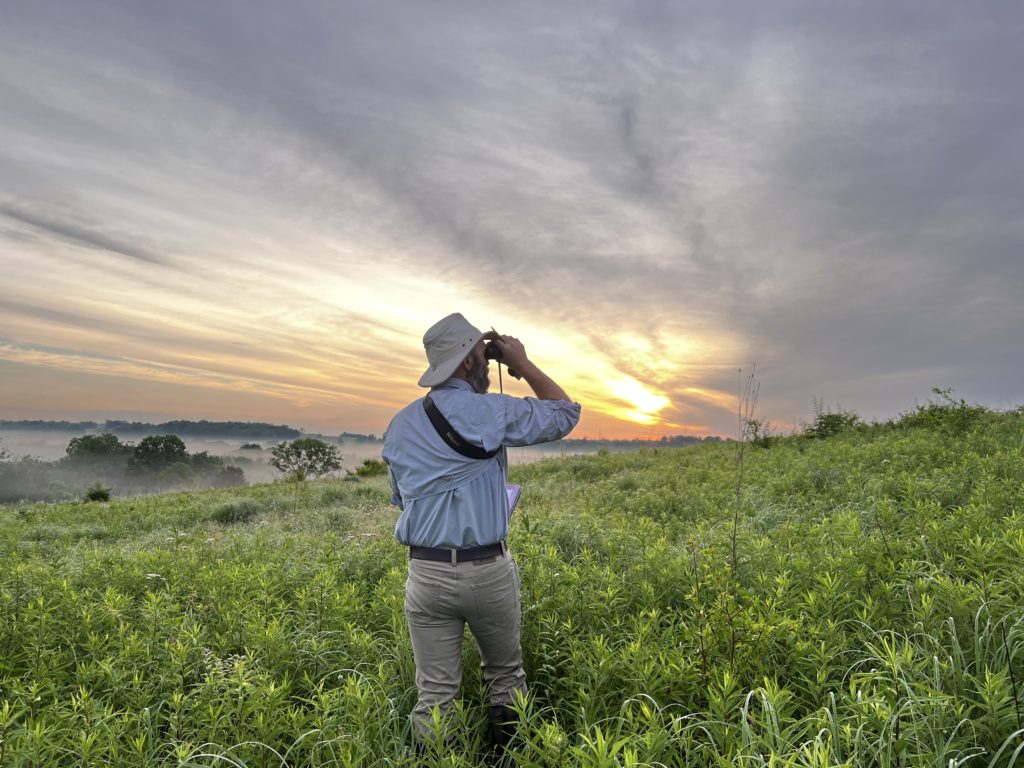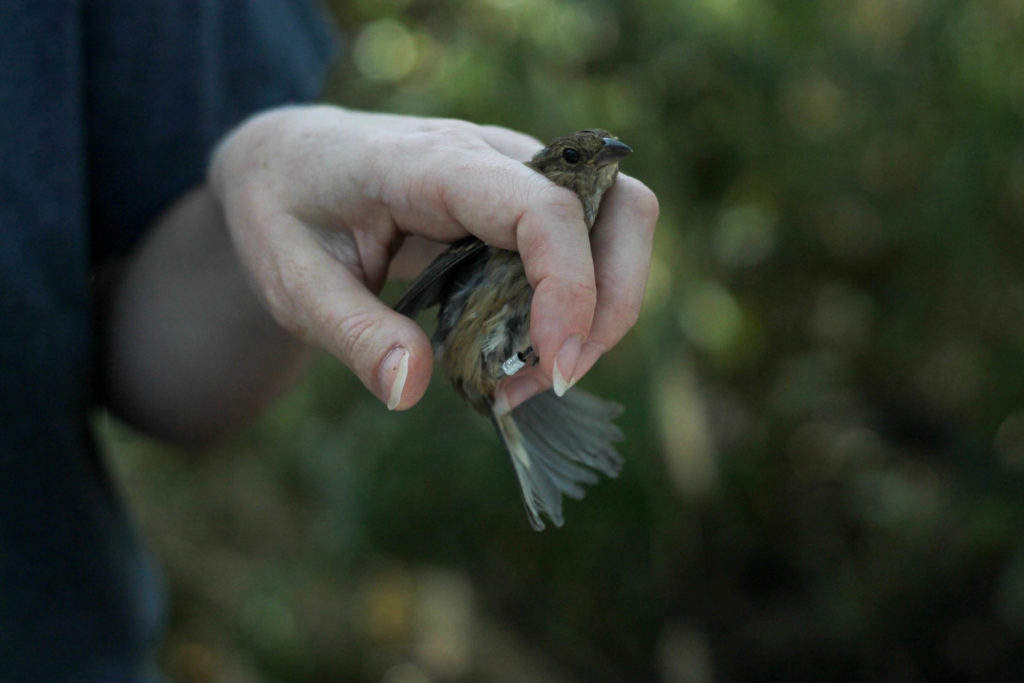Ben Leffew, Preserve Manager & Laura Baird, Assistant Preserve Manager
In 2009 Shaker Village got out of the industrial farming business and focused more on wildlife habitat and passive recreation via the trail system. We began converting fields once used and abused by overgrazing and mismanagement to native grasses and wildflowers with technical and financial support through private land programs with Kentucky Fish and Wildlife Resources (KDFWR) and the Natural Resource Conservation Service (NRCS). This was the unofficial beginning of what we now call The Preserve at Shaker Village and we are constantly working to improve the habitat for the wild things that call this area home.

Harmful or Helpful?
You might be thinking; how do we know if what we’ve done to the landscape is hurting or helping wildlife?
We use population surveys for birds, small mammals and insects – essentially anything we can count in a scientific manner or anything that has an established protocol. The bulk of our wildlife monitoring centers around birds. They act as indicators of habitat quality because if they don’t like what you’ve done with the place, they’ll fly somewhere else to find a suitable habitat. Unfortunately, suitable habitats are becoming harder to find as habitat loss is the main driver for most declines in wildlife populations, birds being no exception. According to avian biologists, grassland birds are in steep decline due to grasslands also being prime farmland and building construction sites.
Bird Banding Station
One of the coolest things we get to do as part of managing The Preserve is working with our partners at KDFWR at a Bird Banding Station established on the south side of the property. The station was built in 2009 to evaluate how our land management activities affect songbirds.
Before any habitat work took place, this area was a typical “old field” habitat – abandoned pastureland with mostly nonnative cool season grasses (Kentucky bluegrass and tall fescue), plus some volunteer trees and wildflowers that had moved in on their own hedge apple aka osage orange). While many of the surrounding fields were converted to native grasses and wildflowers starting in 2009, the banding station’s field was left alone until 2012 to gather baseline data about how birds use typical old fields. This allowed for a more scientific approach so we could compare bird population dynamics before and after a field conversion. It was also important for future management decisions since we did not have the luxury of gathering baseline data before the conversions began.

Bird banding occurs during breeding and migration seasons from May through October following protocols set forth by the Institute for Bird Populations and under the supervision of permitted avian biologists. This limits the number of people at a banding station and makes it off limits to the public. Ten mist nets are opened at sunrise and checked every 40-60 minutes for four hours. Birds are identified, weighed, measured, aged and sexed when possible. During the nesting season, the breeding condition of birds is checked. During migration, the fat deposits on the birds, which are vital sources of energy, are checked as well. Birds are fitted with simple aluminum leg bands which identify them with a unique code. The bands are secure and long lasting but loose, comfortable and lightweight so they don’t impede natural behavior.

13 Years of Findings
So, what have we learned from 13 years of banding birds at Shaker Village? We’ve captured 108 different species of birds, 18 of which are considered Species of Greatest Conservation Need in Kentucky. Migration capture rates have been consistently higher since the area was converted from cool season to warm season grasses, indicating that the landscape has become more attractive to migrating songbirds and provides them better nutrition.

Recaptures provide the most interesting data. In 2020, we recaptured an indigo bunting and a field sparrow, both of which were originally banded in 2015 and were at least seven years old at the time of their recapture. Individual Tennessee warblers have been caught repeatedly during the same migration season, indicating that Shaker Village serves as a stop-over site for migrating birds to stay for a while and fatten up before continuing their journey south.
We hope to continue our research efforts with KDFWR as long as possible. Learning more about how songbirds use The Preserve allows us to make data driven decisions supporting habitat improvement.